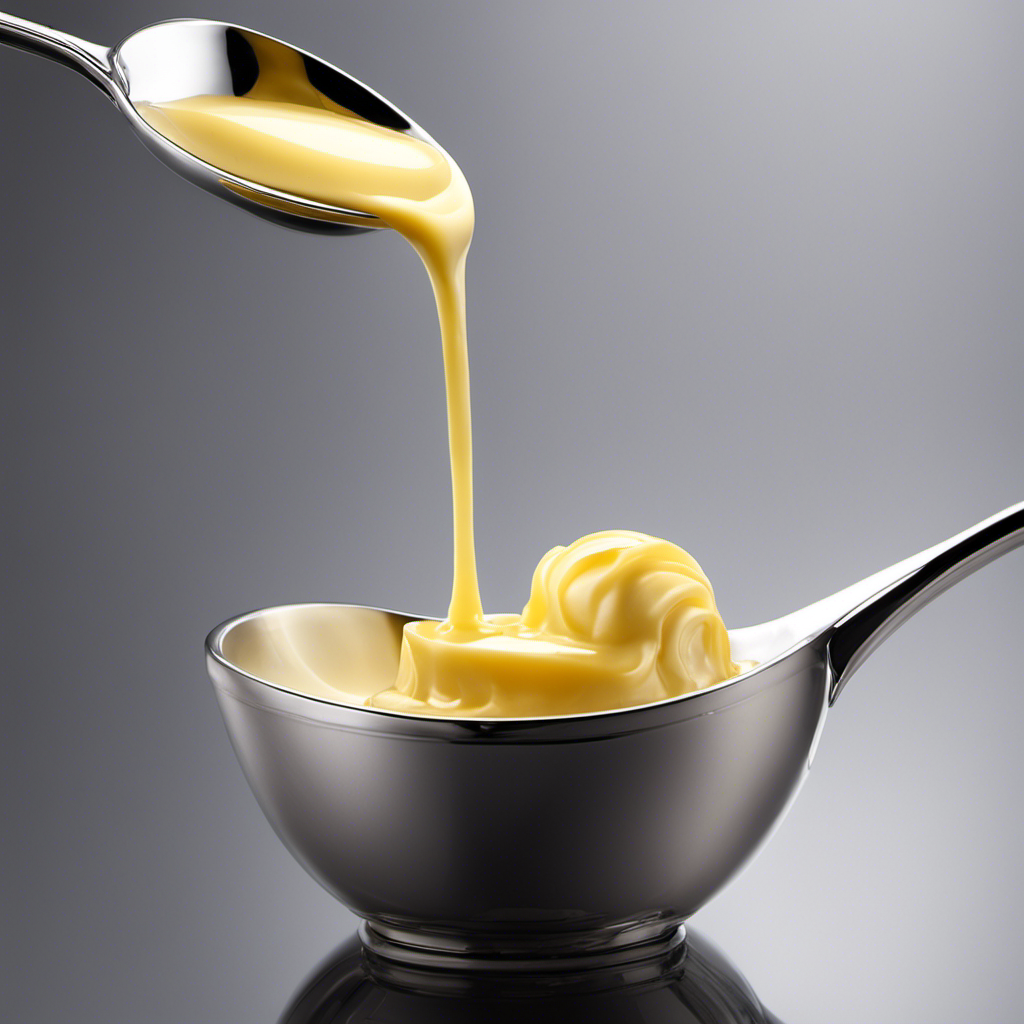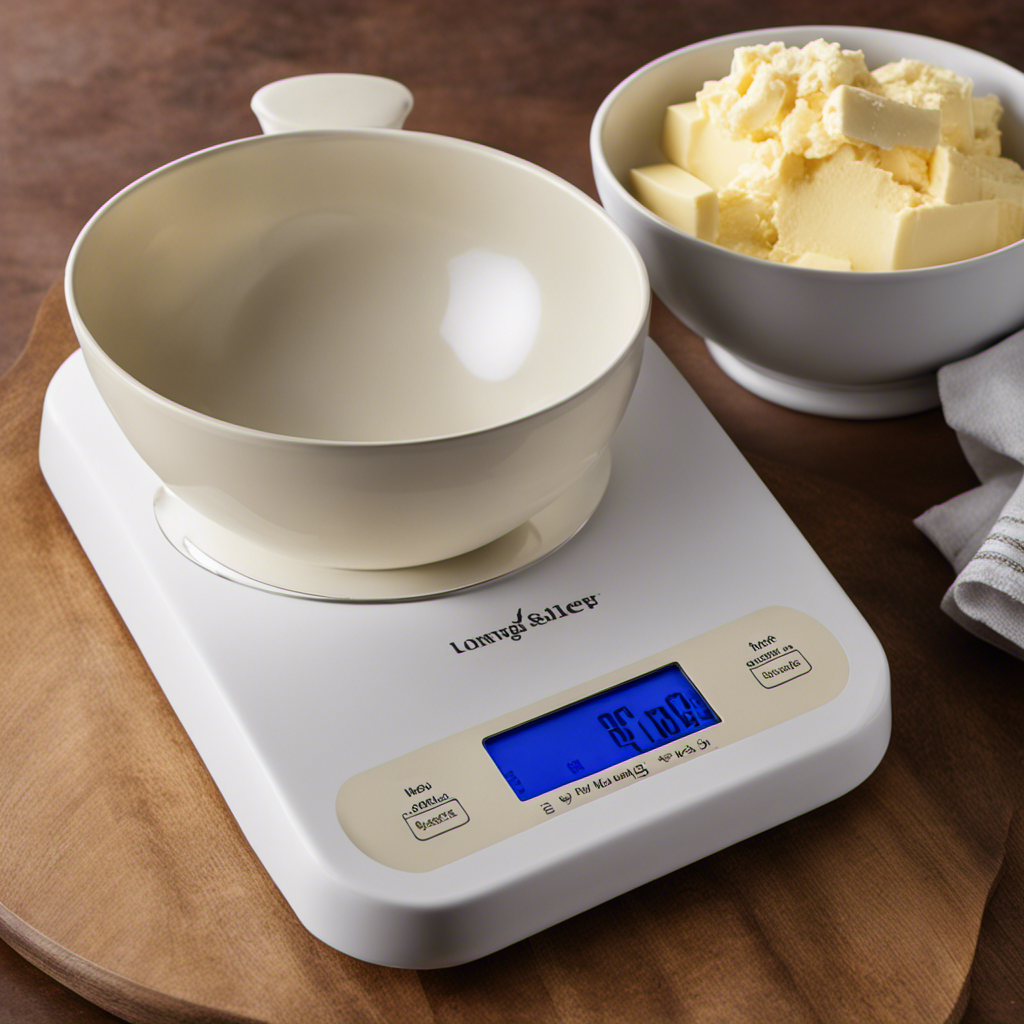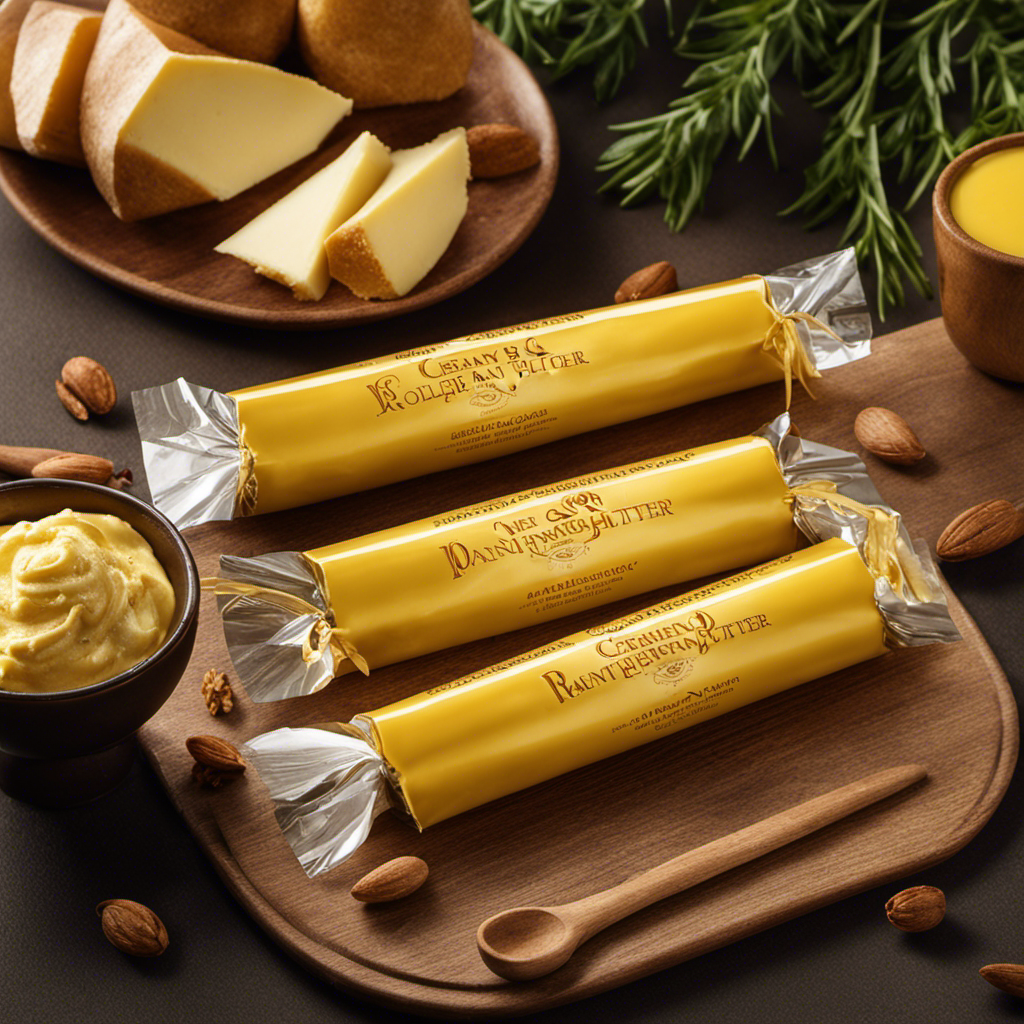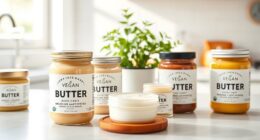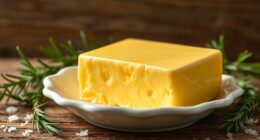I’ve often pondered, what’s the equivalent in grams of a single cup of butter?
Well, I’ve done the research so you don’t have to! In this article, we’ll dive into the world of butter measurements and uncover the precise conversion from cups to grams.
Whether you’re baking a cake or cooking up a storm in the kitchen, understanding this conversion is essential for achieving perfect results.
So, let’s get started and unravel the mystery of how many grams make up that one cup of butter.
Key Takeaways
- 1 cup of butter weighs approximately 227 grams or 8 ounces.
- The density of butter can vary based on temperature and type.
- Butter substitutes can be used in recipes, but taste and texture may differ slightly.
- Butter measurements can vary in different countries, so it’s important to consult a reliable conversion chart or use a kitchen scale for accurate measurements.
Butter Measurements: A Cup to Gram Conversion
1 cup of butter is equal to approximately 227 grams. The density of butter can vary slightly depending on factors such as temperature and type of butter. However, as a general rule, 1 cup of butter weighs around 227 grams. It’s important to note that this measurement applies to solid butter, not melted or whipped butter.
When it comes to butter substitutes, there are various options available. Some common substitutes include margarine, coconut oil, and vegetable shortening. These substitutes can be used in recipes that call for butter, although the taste and texture may differ slightly. It’s always a good idea to read the recipe carefully and consider the specific qualities of the substitute before making the switch.
Understanding Butter Measurements: The Grams in One Cup
There’s no denying that a cup of butter can be quite dense in terms of weight. When it comes to butter conversion ratios, it’s important to understand the different butter measurements.
One cup of butter is equivalent to 227 grams or 8 ounces. This conversion is based on the standard measurement of butter in the United States, where butter is typically sold in sticks. Each stick of butter weighs approximately 113 grams or 4 ounces, and since a cup of butter equals 2 sticks, the total weight is 227 grams.
However, it’s important to note that butter measurements can vary in different countries. For example, in the United Kingdom, a cup of butter is equivalent to 225 grams or 8 ounces. So, when following recipes or converting measurements, it’s crucial to be aware of these variations.
Converting Cups to Grams: Butter Measurement Guide
When converting measurements, it’s important to be familiar with the different ratios for cups to grams. In the case of butter, the conversion can vary depending on the density and temperature of the butter.
However, a general guideline is that 1 cup of butter is equivalent to approximately 227 grams or 8 ounces. This conversion is based on the standard cup measurement of 240 milliliters.
It’s worth noting that the cup to ounce conversion for butter may differ slightly in different countries, as some countries use different cup sizes. To ensure accuracy in your recipes, it’s always best to consult a reliable conversion chart or use a kitchen scale for precise measurements.
Grams to Cups: How Much Butter Is in a Cup
To accurately measure butter in a recipe, it’s best to consult a reliable conversion chart or use a kitchen scale.
When it comes to converting butter quantities from grams to cups, it’s important to note that butter is a dense ingredient, and its volume can vary depending on factors such as temperature and how it’s packed.
However, as a general guideline, 1 cup of butter is equivalent to 227 grams or 8 ounces. This measurement is based on the standard conversion rate of 1 cup being equal to 16 tablespoons, and each tablespoon of butter weighing approximately 14 grams or 0.5 ounces.
Keep in mind that for precise measurements, especially in baking, it’s always recommended to use a kitchen scale for accuracy.
Butter Conversion: Grams Required for One Cup
It’s important to note that when converting butter quantities, the amount of grams required for one cup can vary depending on factors such as temperature and how it’s packed.
When it comes to butter conversion, grams vs ounces can be a bit tricky. Generally, one cup of butter is equal to 227 grams or 8 ounces. However, this measurement is based on a standard stick of butter, which weighs about 113 grams or 4 ounces.
So, if you’re converting tablespoons to grams, keep in mind that there are 16 tablespoons in one cup of butter. To convert, simply multiply the number of tablespoons by 14.18 grams, which is the approximate weight of one tablespoon of butter.
It’s always best to double-check your conversions with a reliable source or kitchen scale to ensure accuracy.
Frequently Asked Questions
Can I Use a Different Type of Butter for Baking Instead of the One Mentioned in the Article?
Yes, you can use a different type of butter for baking instead of the one mentioned in the article. There are alternative options for butter in baking that can work well too.
How Do I Measure Butter if I Don’t Have a Measuring Cup?
When I don’t have a measuring cup, I use alternative methods for measuring butter. One way is to use a tablespoon and measure out the desired amount. Another option is to use a kitchen scale to convert butter measurements to grams.
Can I Substitute Butter With Another Ingredient in a Recipe?
Yes, you can substitute butter with alternative ingredients in a recipe. Some options include coconut oil, applesauce, or avocado. Each has its pros and cons in terms of taste, texture, and health benefits.
How Do I Convert Tablespoons of Butter to Grams?
To convert tablespoons of butter to grams, you can use a simple conversion factor. Multiply the number of tablespoons by 14.18 to get the weight in grams.
Is There a Difference in the Weight of Salted and Unsalted Butter When Measuring in Cups?
Yes, there can be a slight weight difference between salted and unsalted butter when measuring in cups. To measure butter without a measuring cup, use the markings on the butter wrapper.
Conclusion
In conclusion, after thorough research, I have discovered that the amount of grams in one cup of butter is mind-blowing!
Brace yourself for this revelation: a single cup of butter weighs a whopping 227 grams! Can you believe it?
That’s enough to make your taste buds dance with delight and your waistline cry out in protest.
So, next time you’re baking up a storm in the kitchen, remember to measure your butter carefully, because those grams can really add up!

